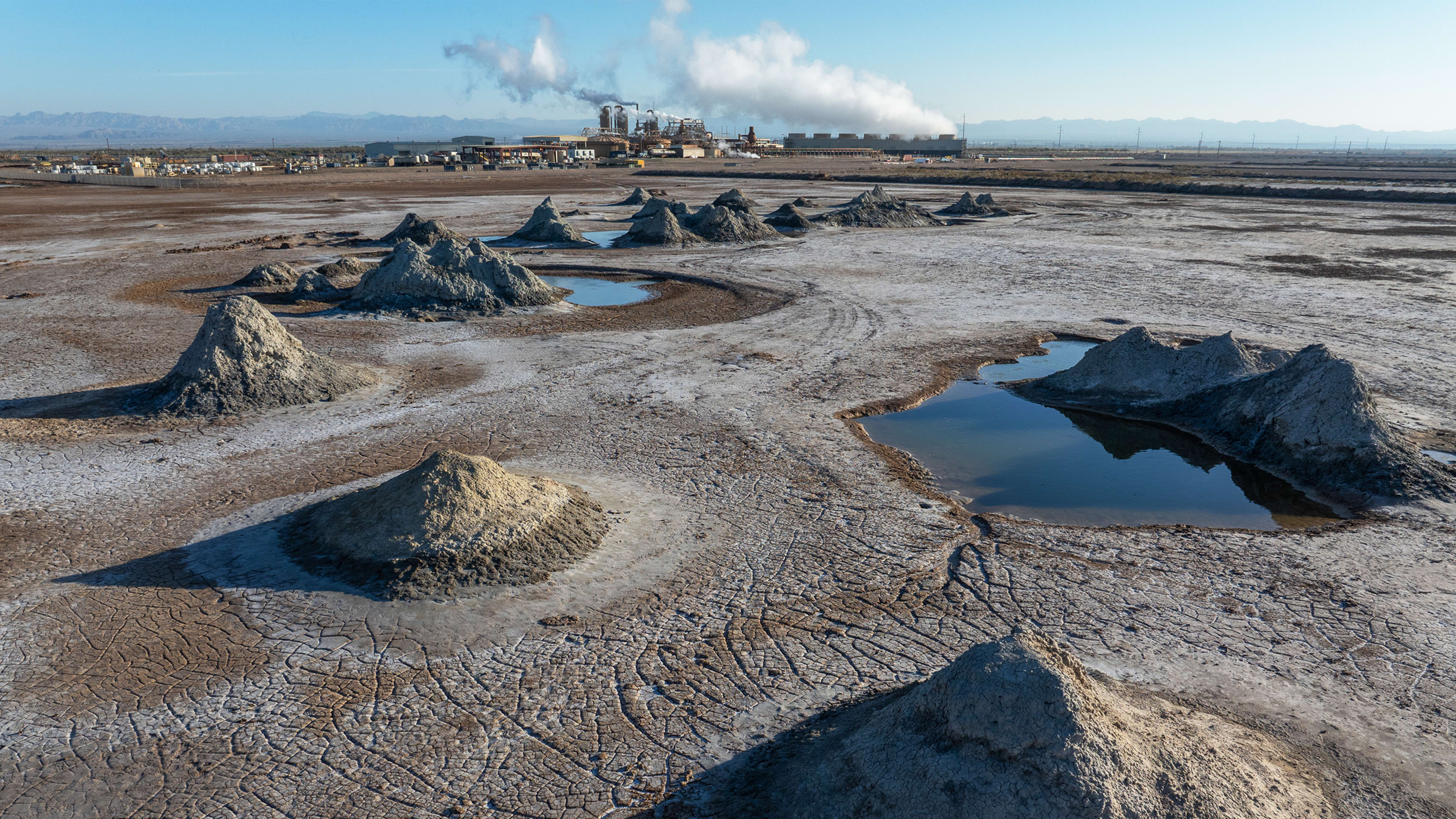In the quest to bolster domestic lithium production, a county in Southern California is emerging as a crucial player.
The Salton Sea, a salty lake located in Imperial County three hours east of Los Angeles, contains some of the world’s largest lithium deposits. According to a Department of Energy report published last November, there are approximately 18 million tons of lithium here—enough to meet the demand for 375 million EV batteries, significantly more than all EVs currently on American roads.
But there’s a catch. Extracting lithium from the Salton Sea involves a special extraction method that hasn’t been proven yet, leaving uncertainty about its commercial viability. The residents of Imperial County, a majority Hispanic neighborhood with a poverty rate that’s twice as high as the national average, are cautiously optimistic: The new lithium projects could produce economic grains but also have the potential for environmental consequences.
“We see the opportunity for economic development here,” says Lorna Avila, a policy advocate at Comite Civico del Valle, a community-based organization in Imperial Valley. “But we also want to ensure there are safeguards around the environmental impacts.”
The cost of lithium mining
The global shift toward clean energy, reinforced by the Inflation Reduction Act, is escalating demand for electric vehicles and energy storage systems. To support this transition, the Biden administration aims to boost domestic lithium production, reducing reliance on foreign sources like China.
Traditionally, mineral mining has raised environmental concerns, exemplified by the lawsuits against Nevada’s Thacker Pass and Rhyolite Ridge mines. Both are open-pit mines with holes that can be as wide as Manhattan and as deep as the Eiffel Tower. Environmental organizations and Indigenous groups have fiercely opposed these mines over their impact on the land and the surrounding habitat.
In contrast, extracting the lithium reserve at the Salton Sea involves a potentially less harmful technology. Termed “direct lithium extraction (DLE),” this method involves extracting lithium from geothermal brine, emitting less CO2 and reducing environmental destruction.
“Revitalizing the Salton Sea region has the potential to help us achieve President Biden’s clean energy and climate goals while creating local jobs and strengthening our clean energy workforce,” says Jeff Marootian, a principal deputy assistant secretary at the Department of Energy.
Last month, the Australian firm Controlled Thermal Resources broke ground on its “Hell’s Kitchen” DLE project in the Salton Sea region, which could be the first large-scale DLE plant in the country. Berkshire Hathaway Energy and EnergySource Minerals, meanwhile, have secured permits and are in varying stages of pilot operation and construction. All three are working toward commercial operations by 2025.
Too good to be true?
Despite optimism from developers and some academics, residents near the Salton Sea fear potential repercussions.
Jared Naimark, a California mining organizer at the environmental group EarthWorks, has worked closely with the Imperial Valley community and authored a report outlining its concerns on the lithium development projects.
“Just because something may have a lower impact than another type of lithium extraction doesn’t mean we don’t need to thoroughly analyze and mitigate those impacts,” he says.
One of the issues includes the use of freshwater from the Colorado River for lithium processing, posing risks in an area where water scarcity is contentious. Naimark argues that the companies’ current estimates of water usage only include lithium extraction facilities and don’t take into account other processes like construction, lithium refining, and battery production, which would happen as the mining projects expand in the region. “Every drop of water is an environmental justice concern,” he says.
Air pollution is another potential issue. People living near the Salton Sea already suffer from dust pollution from the drying lake bed and report much higher rates of asthma, allergies, and other respiratory illnesses. Increased construction activities could lead to more pollution and harm community health in the Imperial Valley.
BHE, EnergySource Minerals, and CTR did not respond to requests for comment on how they are addressing community concerns over their lithium projects.
Working with the community
The Salton Sea region embodies a growing tension between the demand for critical minerals in the clean-energy transition and the immediate impact on local communities.
Shon Hiatt, an associate professor at the University of Southern California’s Marshall School of Business, trusts California’s stringent environmental regulations to address some of these concerns. “In California, it’s very difficult for companies to not follow the strict procedures compared to other states,” he says.
Despite this, Naimark says community involvement needs to play a crucial role, emphasizing residents’ right to comprehensive information about the potential impacts of extractive technologies in their areas.
The state is seeking ways to channel economic benefits from these developments to the people.
In 2022, California passed a law imposing new taxes on companies engaged in lithium extraction at the Salton Sea. The legislation designates 80% of the generated tax revenue to be distributed among the counties near these plants, with the remaining 20% allocated for the restoration of the Salton Sea. The law has the potential to bring millions in revenue to the historically underfunded region. And the community already has a pretty good idea on how that money should be spent.
“Community arts center and libraries for children,” commented one resident in response to Imperial County’s call for public input. Others asked for better bridges and roads, local medical centers, parks ,and job training opportunities. If DLE projects prove to be successful, some of these wishes could come to life.
But despite the financial incentives, Avila believes equitable and safe implementation of DLE projects should be the priority.
“At the end of the day, Imperial Valley is still an environmentally burdened community,” she says. “As the lithium development continues, we want to ensure our community is protected throughout the whole process.”
Recognize your brand’s excellence by applying to this year’s Brands That Matter Awards before the early-rate deadline, May 3.
